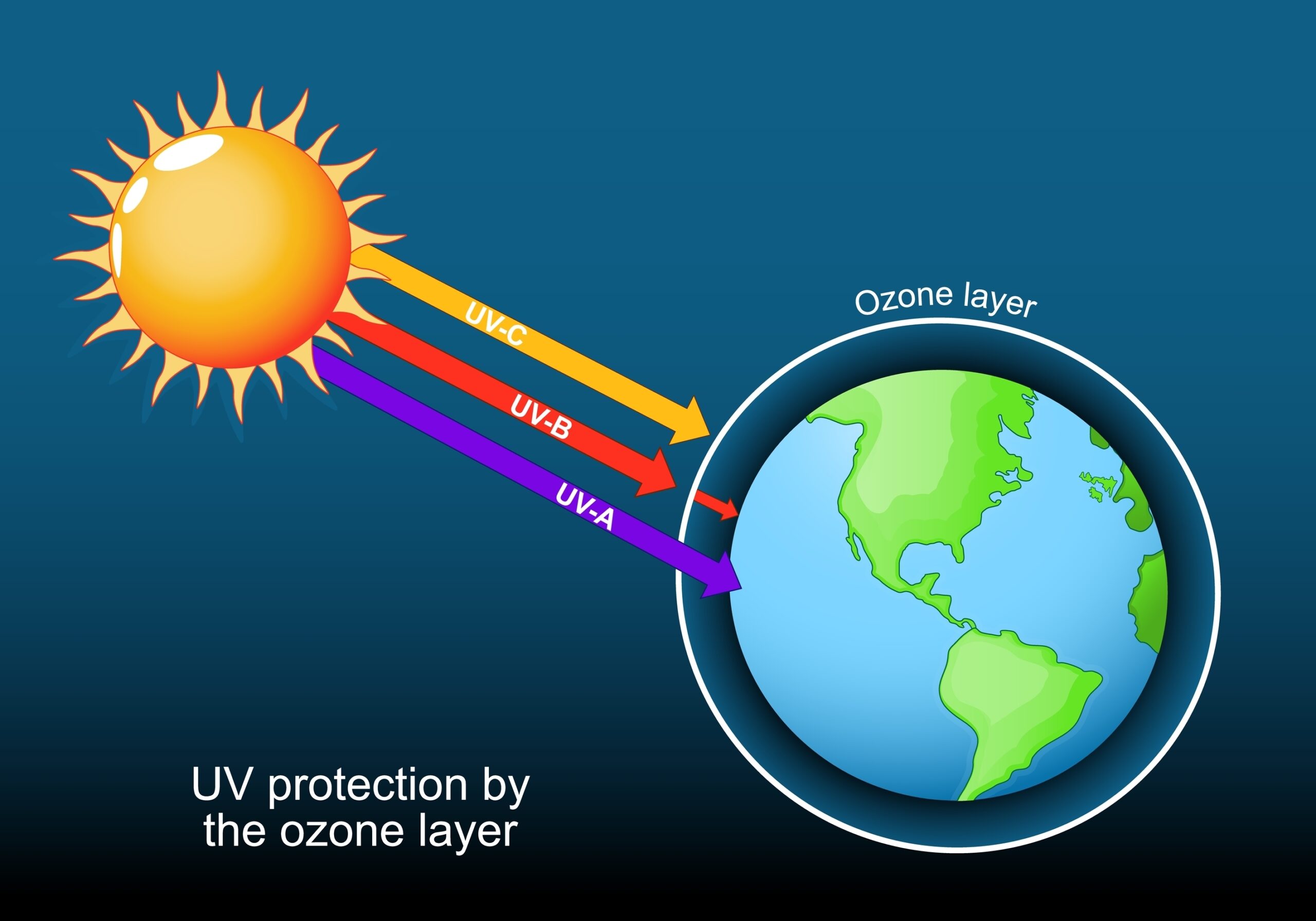Global warming is spiraling out of control as scientist make grim prediction

Imagine a fever that keeps rising — not enough to collapse the body just yet, but enough to signal that something is seriously wrong. Earth is running that fever now. And according to the latest data from the World Meteorological Organization (WMO), we may be about to hit a dangerous new spike.
For the first time in recorded history, there’s a two-in-three chance that global temperatures will temporarily breach 1.5°C above pre-industrial levels within the next five years — a threshold once considered a distant line in the sand. This isn’t just a worrying milestone for climate scientists; it’s a flashing red light for ecosystems, economies, and everyday lives around the globe.

What the New Forecast Actually Means
The phrase “1.5 degrees Celsius” has been at the center of climate discourse for years, but its meaning is often misunderstood. This figure doesn’t represent the upper limit of global survival—it’s a scientifically informed threshold meant to stave off the most catastrophic consequences of climate change. The Paris Agreement, signed by nearly every nation in 2015, aimed to keep warming “well below” 2°C, while striving to limit the rise to 1.5°C. It was a line meant to galvanize global action, reflecting the growing body of research that shows risks to human and ecological systems increase sharply even with small increments in warming. According to the WMO’s latest update, there’s now a 66% chance that global average surface temperatures will temporarily exceed this 1.5°C mark at least once between 2024 and 2028.
It’s critical to understand that this projection doesn’t mean we’ve permanently failed the Paris goal—at least not yet. A “temporary exceedance” refers to a single year or brief period when global temperatures cross the threshold, not a sustained long-term trend. Still, scientists warn that this is a signal we’re coming perilously close to more lasting overshoot. “It is likely that we will see unprecedented temperatures in the next five years,” said Prof. Petteri Taalas, Secretary-General of the WMO. “This will have far-reaching repercussions for health, food security, water management and the environment.” The shift from possibility to probability marks a profound turning point. It underscores that climate change is no longer a theoretical challenge—it’s a lived reality gaining momentum.
This latest forecast is not just about numbers; it’s a reflection of how finely balanced our climate system is. Slight shifts in global averages can unleash disproportionate impacts, particularly on vulnerable regions already grappling with water scarcity, sea-level rise, or extreme weather. The 1.5°C threshold represents more than a symbolic milestone—it’s a boundary recognized by scientists and policymakers alike as one that could mark the beginning of irreversible damage to critical systems, from coral reefs to Arctic ice. While not a “cliff edge,” breaching it, even temporarily, means humanity is treading on dangerously thin ice.

How We Got Here: The Driving Forces Behind the Spike
The surge toward 1.5°C is not just a product of chance. It’s the cumulative result of decades of rising greenhouse gas emissions from human activities—particularly the burning of fossil fuels, deforestation, and intensive agriculture. Carbon dioxide levels in the atmosphere are now at their highest in over 2 million years, and methane, a much more potent short-term heat trapper, is surging as well. What’s changing now is the speed at which these gases are amplifying the natural variability of Earth’s climate, pushing baseline temperatures higher year after year. The past eight years have been the warmest ever recorded, and 2023 ranked among the hottest, driven by a confluence of long-term warming and short-term climate events.
One of the main amplifiers behind the recent spike is the return of El Niño, a naturally occurring climate phenomenon characterized by warming of surface waters in the tropical Pacific Ocean. El Niño events temporarily add to global temperatures, supercharging weather extremes and disrupting climate patterns worldwide. In combination with underlying global warming, the current El Niño could push annual global temperatures to new records. WMO data indicate that at least one of the next five years has a nearly 98% chance of becoming the warmest on record. This combination of human-caused warming and natural variability is creating a climate “double whammy” that is fast-tracking many of the worst-case scenarios scientists have long warned about.
The implications go beyond weather statistics. When these temperature spikes occur, they stress infrastructure, threaten crop yields, accelerate glacier melt, and increase the risk of wildfires and heat-related illnesses. While natural climate cycles like El Niño have always occurred, their effects were once buffered by a more stable global climate. Now, they act as fuel on an already burning fire. The lesson here isn’t just about what nature can do—it’s about how much human influence has changed the baseline. We’re no longer seeing natural variability around a stable average; we’re seeing natural variability on top of a rising escalator of human-driven change.

What It Means for People and the Planet
Even a temporary breach of the 1.5°C threshold can bring real and immediate consequences. Elevated global temperatures increase the probability of extreme weather events: more frequent heatwaves, heavier rainfall, prolonged droughts, and stronger tropical storms. These aren’t isolated phenomena; they’re already unfolding across the world. Just last year, severe heatwaves scorched Europe and parts of Asia, while catastrophic flooding displaced millions in Pakistan and Sudan. According to the Intergovernmental Panel on Climate Change (IPCC), every fraction of a degree increase in warming multiplies these risks. For vulnerable populations in the Global South, particularly those with limited access to infrastructure and disaster preparedness, the costs are often measured in lives and livelihoods.
Agriculture is particularly sensitive to these changes. Higher temperatures and shifting precipitation patterns affect crop yields, reduce food security, and exacerbate malnutrition in already fragile regions. Livestock suffer, fisheries are disrupted, and soil health declines. Climate change is also a growing public health threat. As heatwaves become more intense and prolonged, the risk of cardiovascular and respiratory illnesses rises, particularly among the elderly and those with preexisting conditions. Vector-borne diseases like malaria and dengue fever are expanding into new regions as temperatures climb, complicating public health strategies that were designed for cooler climates. The human body, like the planet, has limits to what it can adapt to without long-term harm.
The ecological toll is equally severe. Coral reefs, which support a quarter of marine biodiversity, are facing near-certain bleaching if temperatures continue to climb. Arctic ice continues to retreat, affecting global ocean currents and contributing to sea-level rise. In tropical rainforests and boreal forests alike, ecosystems are beginning to shift or collapse under pressure. These impacts are not just environmental—they’re economic and social. When communities lose fisheries, forests, or agricultural land, the ripple effects include migration, conflict over dwindling resources, and the erosion of cultural and economic systems. A temporarily warmer world is still a more dangerous world.

Experts Weigh In: Why This Moment Matters
Climate scientists and meteorologists are united in viewing the latest forecast as a call to action, not resignation. “Exceeding the 1.5°C threshold for even one year is a warning sign that we’re heading toward longer and more sustained breaches,” said Dr. Leon Hermanson, a lead researcher at the UK Met Office, which collaborated with the WMO on the report. Experts emphasize that while temporary overshoot doesn’t mean the Paris Agreement has failed, it greatly increases the difficulty of meeting its targets. That’s because climate systems contain feedback loops—such as melting ice reducing Earth’s reflectivity—that can accelerate warming and lock in long-term change.
The science also underscores the narrowing window for effective intervention. As emissions continue to rise, the amount of carbon dioxide we can safely emit before crossing critical thresholds—the so-called “carbon budget”—shrinks. This makes short-term action particularly urgent. The IPCC has made it clear: to have a chance of limiting warming to 1.5°C in the long term, global emissions must peak before 2025 and be cut nearly in half by 2030. These aren’t just abstract deadlines. They reflect the physical reality of how gases accumulate in the atmosphere and influence planetary systems over time. The more we delay, the more drastic and disruptive future measures will have to be.

Still, the tone among many scientists remains cautiously hopeful. They emphasize that the tools to prevent the worst outcomes already exist—from renewable energy to reforestation to adaptive urban design. What’s missing is the political and societal will to deploy them at the necessary scale and speed. This moment, while alarming, can serve as a galvanizing force. “Climate predictions are not just warnings,” said Prof. Taalas. “They’re also guides—if we listen to them.” As climate extremes become harder to ignore, there is growing momentum around the world for action that matches the scale of the threat.
Beyond the Headlines: What Can Be Done
It’s easy to feel overwhelmed in the face of such daunting predictions, but paralysis is not the only path forward. Action—at every level—matters. Governments need to implement stronger policies to reduce carbon emissions, invest in renewable energy, and phase out fossil fuel subsidies. The latest forecast underscores the need for rapid, systemic change: stricter fuel efficiency standards, expanded public transportation, climate-resilient infrastructure, and reforestation initiatives. Importantly, policies must be equitable, recognizing that the countries most affected by climate change are often those least responsible for it. International cooperation, especially in financing adaptation in the Global South, will be critical.
Industries, too, play a pivotal role. From construction to agriculture to tech, the choices companies make now will shape the emissions trajectory for decades. Leaders in the private sector can shift supply chains, decarbonize operations, and invest in innovation. Financial institutions are increasingly being pressured by investors and citizens alike to align portfolios with climate goals. Transparency and accountability—backed by regulation—will be essential to ensure these pledges translate into real-world impact. Business-as-usual is no longer a viable model in a warming world.

For individuals, the responsibility isn’t to solve the crisis alone, but to support change where it matters most. Voting for climate-conscious leaders, reducing personal carbon footprints, and advocating for systemic reforms can collectively create momentum. Shifting to plant-based diets, using public transport, or supporting local sustainability efforts all contribute. But more importantly, people can demand that institutions—governments, companies, and media—treat climate not as a niche issue but as a defining challenge of our time. The path forward is still open, but the urgency has never been greater.
Loading...

